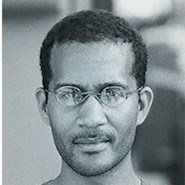Pedestrian malls took off across the United States in the 1960s and ’70s as city business districts sought to reverse the centrifugal force of Americans moving away from walkable urban cores toward car-centric, suburban shopping malls. Between the ’60s and ’80s, as many as 200 pedestrian malls were built. Of those, perhaps the most successful has been the 13-block 16th Street Mall in downtown Denver, which connects the Colorado State Capitol to what would later become the Mile High City’s warehouse district, Lower Downtown. The mall laid the foundation for a robust downtown that had been brutalized by urban renewal policies in the ’60s and ’70s. Now it’s about to be entirely rebuilt from the ground up.
“We think this is the backbone of downtown and the hub of the Rocky Mountain West,” says Kate Barton, a senior vice president at the Downtown Denver Partnership, a nonprofit organization that promotes the revitalization of downtown Denver. “It's the No. 1 tourist attraction in Denver. For us to give it a refreshed face and make it a place where people want to spend time and invest is critically important.”
Transforming an ailing street
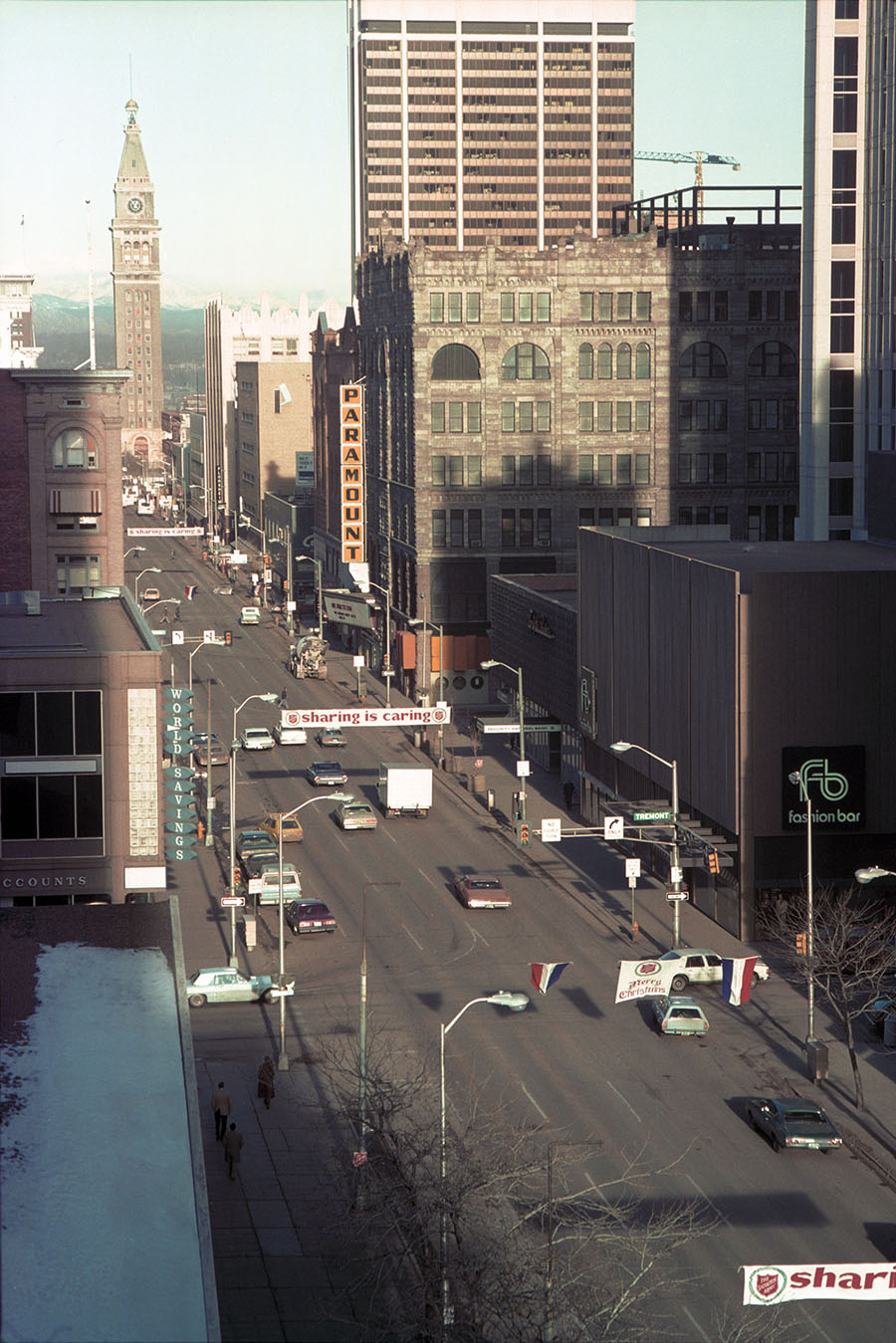
Sixteenth Street was the historic retail hub of downtown Denver, but by the 1970s, according to the nonprofit preservation group Historic Denver, the street was struggling economically and socially. Downtown generally, and 16th Street particularly, was becoming a place crowded with cars more than people. Plans for a pedestrian mall in Denver had been floated since at least 1963, but they began in earnest in 1976 when city leaders hired one of the most prominent architectural firms of the day, New York City-based I.M. Pei & Partners (now Pei Cobb Freed & Partners), to transform the ailing street. According to the 2010 16th Street Urban Design Plan, the mall had three objectives: lessening traffic congestion in downtown, providing more efficient bus service to city and suburban neighborhoods, and creating a new pedestrian environment and place for people in downtown.
The mall was chiefly designed by architect Henry N. Cobb, a partner in Pei’s firm, and also by landscape architect Laurie Olin, founder of the eponymous Olin Studio design firm. Designers divided the 80 ft wide street into three zones, according to the firm: a 22 ft wide central promenade flanked by mature trees, two 10 ft wide bus paths, and a pair of 19 ft wide sidewalks. The central blocks of the mall followed this symmetrical layout; the blocks at the ends of the mall shifted the transitway off center and created a single row of trees to open views to the capitol and Longs Peak on the Front Range.
Signature feature
The signature feature of the mall is its square pavers, laid on the diagonal with individual charcoal gray, light gray, and Colorado red granite pavers combining to create a geometric pattern that is “pronounced at the center and more diffuse at the edges, so as not to detract from colorful facades and window displays,” according to Pei’s site.
There are several accounts of the symbolism of the patterning. It has been likened to Navajo rug patterns and to the circle and square decorative motifs on the floor of the Pantheon in Rome. “There's something ancient and thoughtful from the Navajo rugs, with something formal and classical merged together,” says Jason Whitlock, AIA, a principal city planner of urban design with Denver’s Community Planning and Development department.
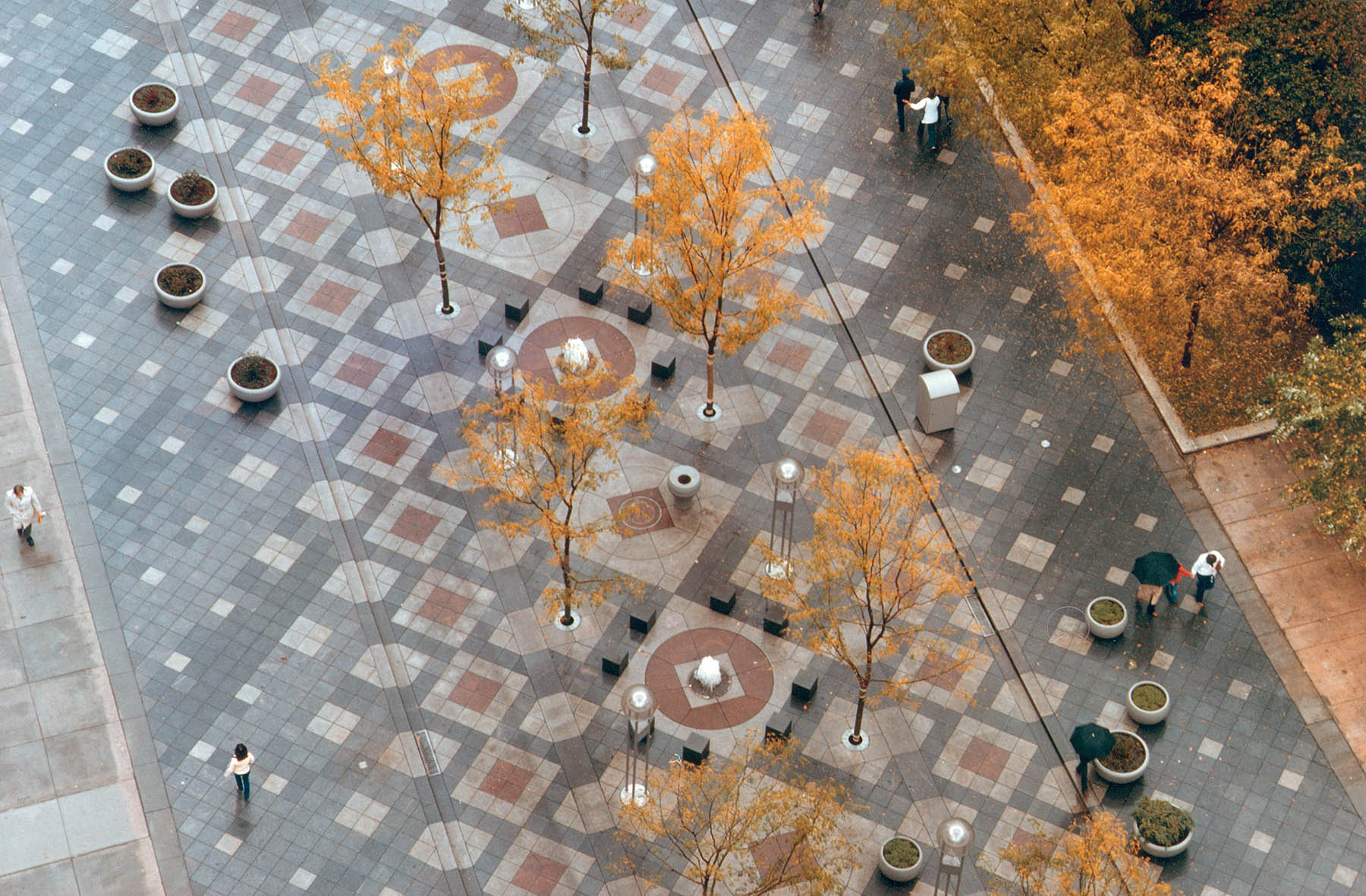
(The mall pattern has also been likened to a diamondback rattlesnake, but Cobb and Olin purportedly discovered a rattlesnake belt in a shop on the mall only after the design was finished.)
The paver pattern also served, as Historic Denver notes, to “reduce material monotony, which can plague streetscape interventions of this size.” Two tree species, honey locusts and red oaks, were planted “precisely within the field of the paving pattern.” And specially designed lanterns — tripartite stalks capped with acrylic globes — provided a “unified glow along the promenade that was intended to fade and brighten according to the daily rising and falling of the sun.” It was, in typical modernist fashion, an ambitious and holistic attempt to revitalize the heart of the city. Historic Denver cites a 2008 Urban Land Institute study that referred to the mall as a “unified concept and public art of the highest international quality.”
Transit corridor
The 16th Street Mall was more than a pedestrian ramble; it also became downtown’s main transit corridor. The mall’s free shuttle bus service, which is still operational, consolidated hundreds of bus routes running through downtown and reduced bus traffic through the central city by 50%.
More than 200,000 Coloradans turned out to celebrate the mall’s opening in 1982. Since then, the mall has proved to be one of the most successful pedestrian corridors in the country while also attracting around 50,000 riders a day. More than 200 restaurants and shops line the mall, along with 5,700 residential units and 2,500 hotel rooms. According to the Downtown Denver Partnership, as many as 400,000 people — commuters and pedestrians — traverse the mall each week.
Nevertheless, when it was built, the mall had a projected life span of only around 30 years — which passed in 2012. And by then it was definitely getting run-down. Now, the mall is almost 40 years old, “ and the infrastructure ultimately is failing,” Barton says. “(It) is a long life span for a public infrastructure project. This is the time for us to invest in renovating and taking care of the infrastructure and planning for the next 37 years.”
Renovated design
The deteriorating conditions of the mall were costing the city $1.2 million a year in maintenance. So in 2010, city and community leaders embarked on a decadelong planning effort to renovate the mall. On March 8 of this year, the city council approved a $149 million reconstruction of f the mall.
Among the major moves of the reconstruction is removing the center promenade in favor of a scheme that pushes the buses to the center of the street and opens up much wider sidewalks that will create what Barton describes as more “amenity spaces” including “patio cafes, vendor spaces, (and) play spaces for families and kids.”
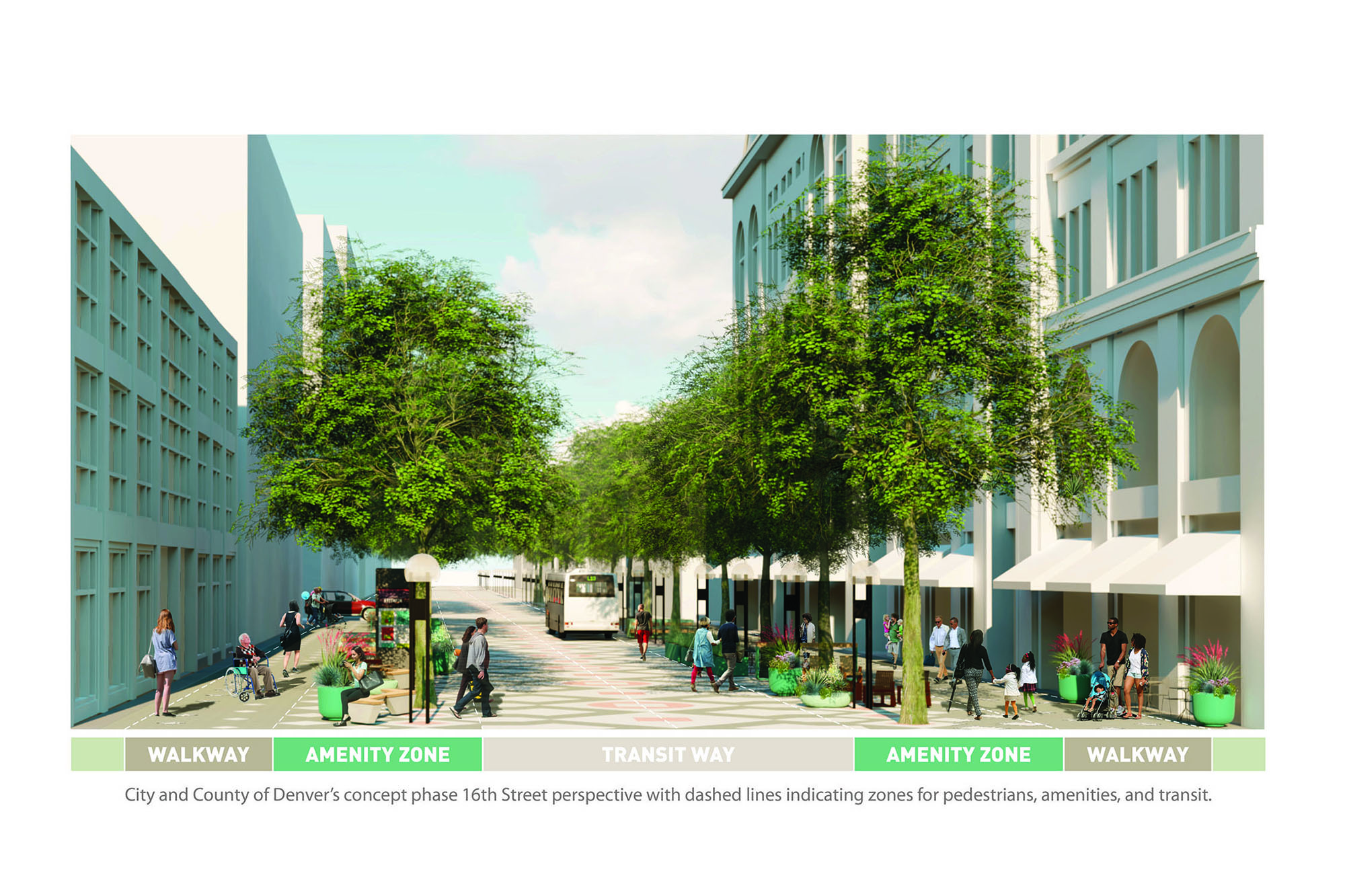
Further, the mall’s granite pavers have been deteriorating for years, so all 400,000 of them will be replaced. The original design did not include a subsurface drainage system for the pavers, so “there was no place for (rain) water (and snow melt) to go, resulting in damage from freeze/thaw cycles,” says Travis Bogan, P.E., PMP, the director of special projects for the Denver Department of Transportation and Infrastructure. The pavers also have a low surface profile, so when they get wet with rain or snow, they get slippery. The new pavers will have more surface friction to reduce the potential for slips and falls.
The new pavers will be smaller, which will reduce the surface area buses are coming into contact with, reducing the potential vertical displacement of the pavers, therefore minimizing damage to the mortar that occurs when buses travel over the surface of the pavers, Bogan notes. In addition, Whitlock adds, the new pavement system will feature subsurface drainage to convey moisture away from the subgrade and reduce the frequency of maintenance required on the mall.
The mall’s trees will also get overhauled. According to a DOTI PowerPoint presentation, the original mall had 199 trees. Of those, only 144 remain — 55 were removed due to disease or damage — and 74% of the remaining trees have what the city describes as “fair to poor structure.” In the new plan, 253 new trees, across a wider variety of species, will be planted. While the mall’s original tree planters were large for their time, says Whitlock, they are significantly too small today. The new tree plantings will have larger soil volumes with structural cells supporting the pavers for roots to grow deeper/further and make more connections with other trees, strengthening all of them.
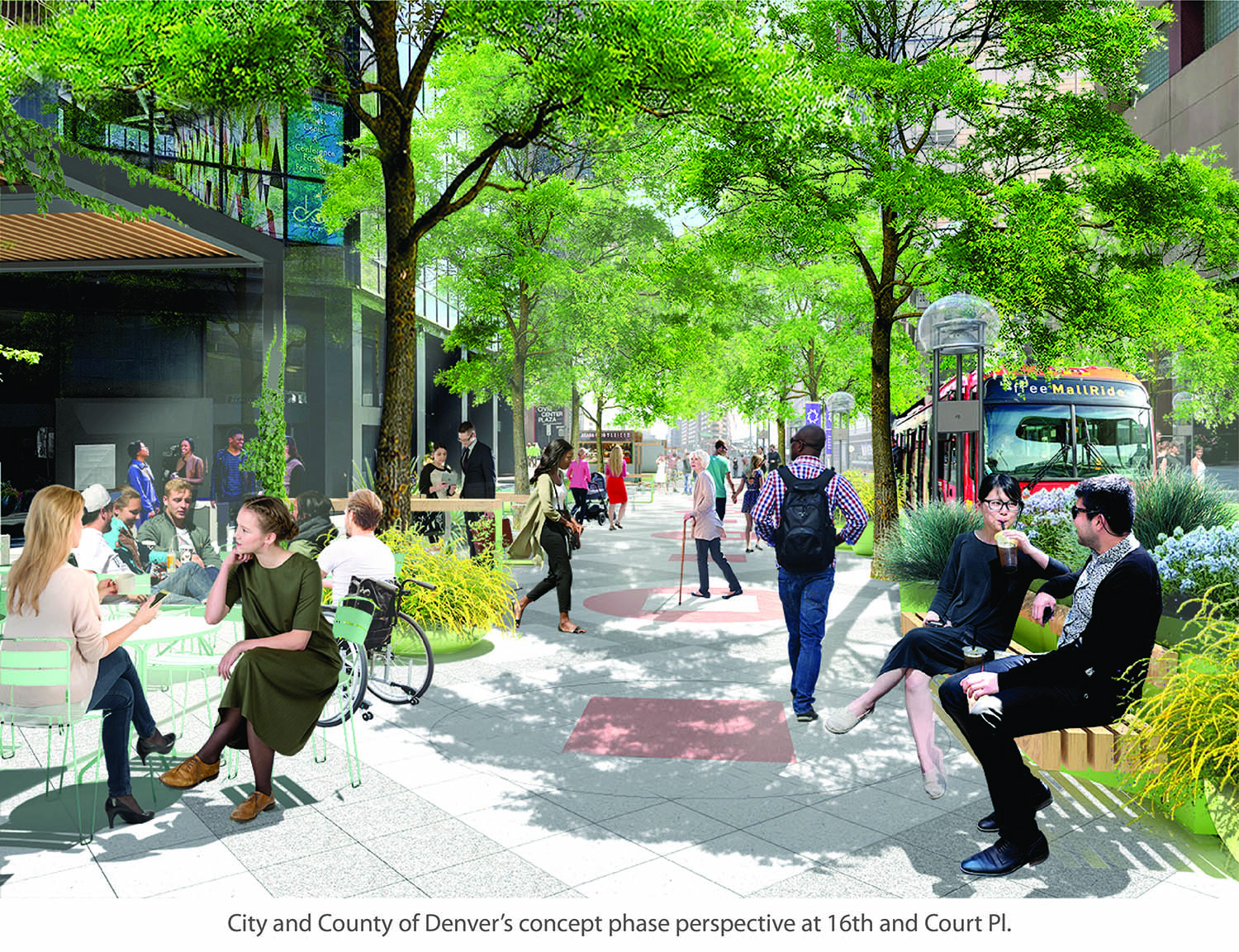
The project will also include new tech infrastructure, including new fiber optic lines, LED lights that can change color, and interactive wayfinding. Lastly, the reconstruction will replace a 140-year-old waterline that runs down 16th Street.
The changes mean that re-creating the exact patterning of the original mall is not possible, though planners note that the color scheme, diagonal layout, and pattern of square and insert circles will remain.
Work begins
Later this year design-build contractor PCL Construction will begin work to relocate utilities in preparation for construction, which will start next summer. PCL is building a 3D building information model of underground infrastructure that Bogan says will “inform potential utility conflicts, so they can confidently design the improvements and construct within the specified constraints, including providing access to businesses and facilities and completing construction by the end of 2024.” (PCL did not respond to requests from Civil Engineering.)
According to Whitlock, less than 50 pedestrian malls remain in the U.S., and only nine are pedestrian-oriented transit malls. However, Whitlock notes that the 21st-century street is not just about moving people from one place to another: It’s an adaptable, flexible place for people to slow down, live their lives, and join in community building, he says. “In addition to the mall working well as a hallway, it also needs to work better as our city’s living room.”



